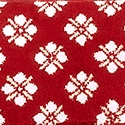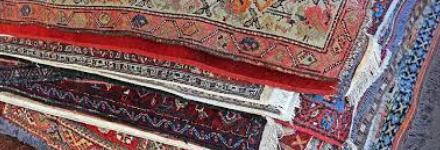Patan, in Gujarat, is home to double ikat fabrics, also called Patola. Double ikat is a technique of resist dyeing which is practised in Patan, Gujarat. This technique involves interlacing the warp and weft with dyes to achieve the required designs.
Patola sarees are woven in silk and traditional intricate motifs designs like elephant, peacock, kalasha (pot), parrot, basket, jewellery pattern, foliage, creepers, abstract geometrical patterns etc. Now, with the experimentation in design, new designs in motifs are also practised along with the traditional motifs. A peculiar characteristic of patola is that the pattern or motifs designs on the saree is the same on both the sides making it wearable from the reverse side also.
The Ikat technique in its most complicated and sophisticated form is woven in Patan, Gujarat exclusively by a single family of weavers – the Salvi family who weave the double ikat famed Patola of Patan. Mentioned in ancient records from the 4th century onwards and draped only at important ceremonies the Patola is distinct in terms of skill and imagination.
It was in the eleventh century that Raja Kumarapal of the Solanki dynasty brought 700 weavers to Patan from JaIna in Maharashtra. Though the town was founded in AD 746, this influx propelled the growth of Patan as an ikat centre. One of Gujarat’s most important textile export from the 14th century onwards to the courts of South-East Asia – Indonesia, Philippines, Borneo, Malaysia and Thailand where it influenced weaving and textile cultures.
Woven usually in the high contrast colors of red, black, yellow, green and white, with floral and animal pattern for the Hindu communities and geometric and florals for the Muslims, the waiting list for Patola saris extends up to 3 years.
The Patola weave is a yarn-resist dye technique, is characterized by extreme precision in multiple tying, dyeing and weaving. Both the wrap and the weft threads are dyed separately and the pattern emerges in the actual act of weaving.


